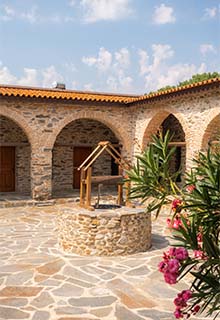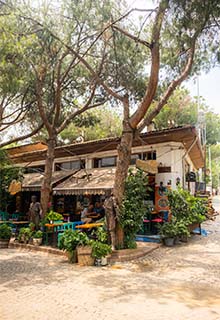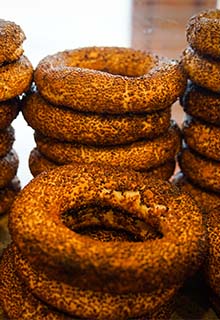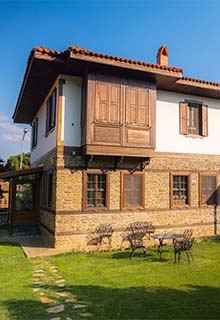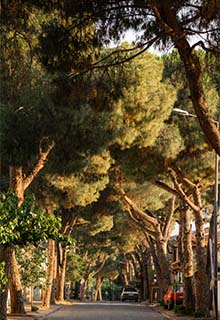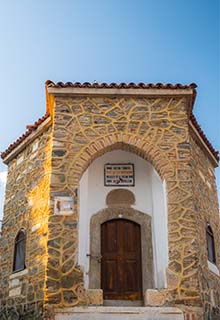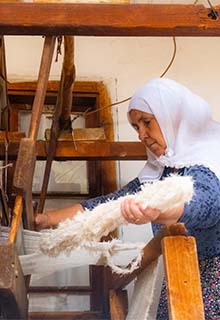

Birgi
Nestled in one of the most fertile valleys of the Aegean region, Birgi is a charming and picturesque village. It is also historical: Connected to the Ödemiş district of Izmir, Birgi has been home to numerous civilisations since antiquity. The village’s classical Seljuk and Ottoman houses are still standing, and in addition to restored traditional homes and cobbled streets, Birgi Grand Mosque majestically overlooks the traditional urban layout. In Birgi, one can also see fine examples of the Seljuk artistic traditions, as well as the decorations, woodwork and tiles of the Great Mosque.
A Historic Capital
With a rich culture and impressive beauty, Birgi’s five thousand years of history includes serving as the capital of the Aydınoğlu Principality during the Anatolian Principalities Period. With over 200 registered cultural assets, Birgi was placed on the Tentative List of UNESCO World Heritage Sites in 2012. In addition, it is also involved in international organisations such as the Cittaslow Slow Cities network.
Among the prominent protected cities in Western Anatolia, Birgi is similar to an open-air museum, featuring characteristics carried from the period of the Principalities to the present day in the form of its unique architectural texture, houses and mansions with bay windows, as well as mosques and madrasahs, tombs, baths and fountains, complexes and many other works.
It is indeed an immense pleasure to stroll the narrow streets of Birgi and observe the village’s significant historical structures, relax in an authentic village café shaded by age-old plane trees, and enjoy listening to Birgi’s residents discuss the culture and history of their home village.
A Delightful Stroll Through A Captivating Open-air Museum
Birgi is seven kilometres from Ödemiş, in the city of Izmir. As the cultural and faith tourism centre of Ödemiş and surrounding area, Birgi was included in the Tentative List of UNESCO World Heritage Sites in 2012. The village, which attracts attention with its rich culture, lush nature, and natural beauty, offers visitors an opportunity to observe rare examples of traditional residential texture dating back to the 18th century.
Featuring a colourful historical texture, monumental structures and traditional residences, Birgi was declared a protected area in 1996 and became the first village under protection. Set on the slopes of Bozdağ, the highest mountain network of the Western Aegean, the village enthrals visitors with its architectural structures and works dating from the 12th century.
Two Important Buildings Reflecting the Architecture Of The Period
Aydınoğlu Mehmet Bey Mosque (Ulu Mosque)
The pulpit of the Ulu Mosque is covered with a hipped roof featuring a wooden ceiling typical of Seljuk period architecture – the pulpit took a master craftsman seven years to complete. The simplicity of the mosque’s construction style and the unpretentious titles of its narrow columns are a beautiful indicator of the settled lifestyle of the Anatolian Principalities Period.
Çakırağa Mansion
The 18th-century Çakırağa Mansion is a stellar reflection of the architectural and decorative style specific to the region at the time. Among the finest models of the era’s civil architecture, Çakırağa Mansion is worth visiting.
Significant structures within the scope of faith tourism include Aydınoğulları Tomb and Sultan Şah Tomb, Ataullah Efendi Madrasah (İmam-ı Birgivi Madrasah) and Kale Madrasah, and the Ottoman Bath and Sasalı Bath (Kırk Kızlar Hamam), as well as Sandıkeminioğlu Mansion, Kerimağa Mansion, Çarşı Fountain, Karaoğlu Mosque, Şeyh Muhiddin Bath (Çukur Bath), Dervişağa Darü'l Hadisi (Çukur Madrasah), Dervişağa Mosque, Koca Fountain (Bıçakçı Esseyit Hacı Ali Ağa Fountain), Hafza Hatun Fountain (Taşpazar Fountain), Demirbaba Fountain, Paşa Fountain, Akmescit (Elif) Dede Fountain, the Observation Tower, Sıbyan School, Güdük Minaret Masjid, Demirli Store, and Imam-ı Birgivi cemetery.
A Stunning Presentation of Aegean Delicacies
In his travel writings, Evliya Çelebi praises the region’s favourable climate and fertile lands: among other products, 72 fruits and vegetables specific to the region are grown here, presenting an agricultural wealth and generosity of nature that appeals to the palate as well as the eye.
The famous breakfast, consisting of natural and organic products, is highly recommended, as are other renowned specialities of the region such as buttered Keşkek, Çatal soup, stuffed bread, stuffed zucchini blossoms, and Kestirme soup – made with broth and the meat of pasture-raised chickens. In addition, the sautéed organic herbs and green salads (nettle, hibiscus, radish leaves) are delicious.
A Trade Centre On the Historic Silk Road
Birgi, located on the historical Silk Road, has been an important silk production centre since ancient times; it is estimated that the silk production in Birgi began fifteen hundred years earlier. In the 17th century, Evliya Çelebi noted that loads of silk from Birgi were sent to all cities.
Silk weaving, which holds a prominent place in traditional Turkish handicrafts, is now conducted on industrial-type looms. Birgi’s silk looms and traditional handicraft centres are wonderful to visit – both to see the weaving and to purchase some of the area’s famous woven silk products.

